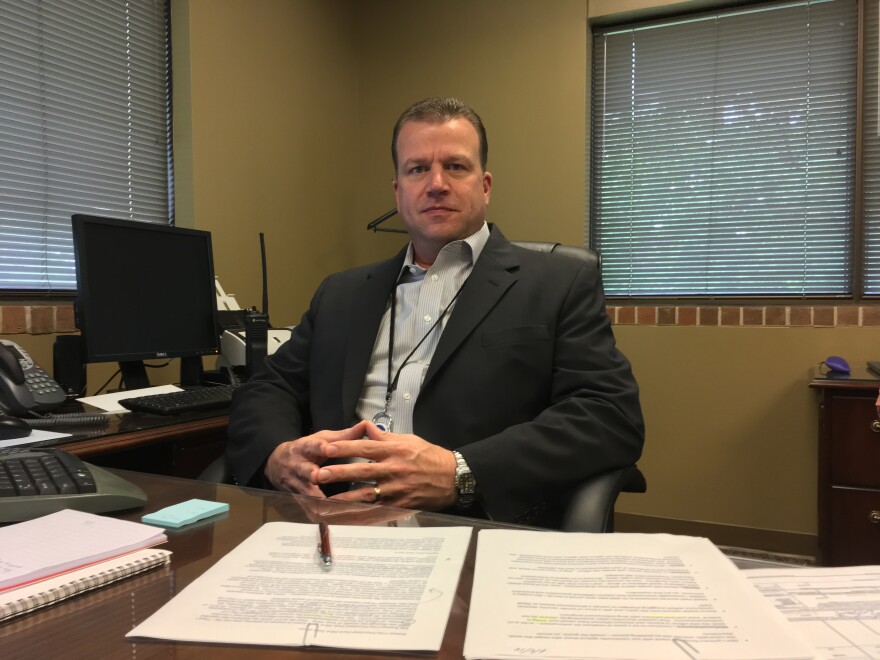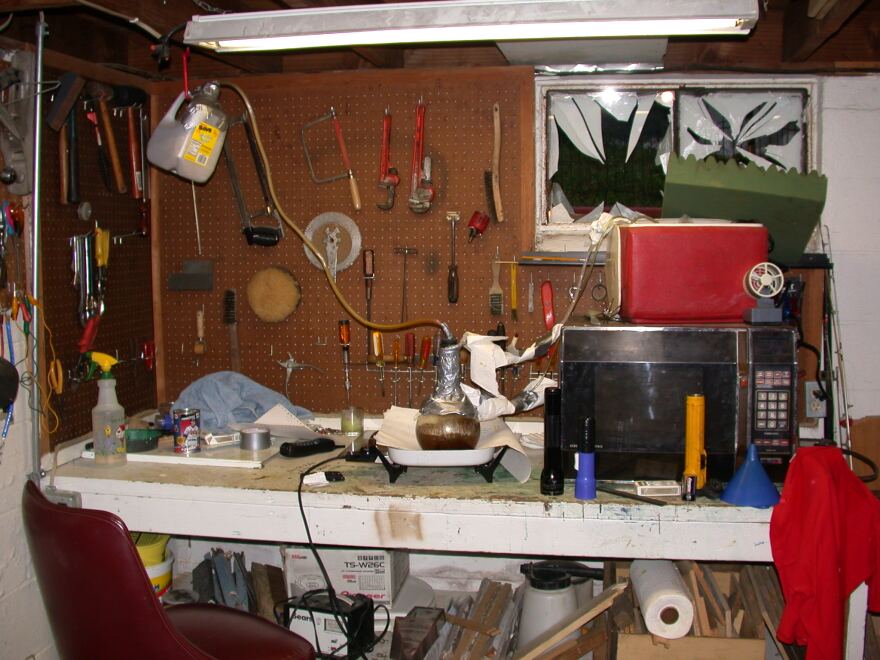Starting in the mid-1990s, Capt. Dan Cummings worked as an undercover cop going after meth suppliers in his hometown of Independence, Missouri.
He had grown up seeing what meth could do, so for him the work was personal.
“When I was a kid, a cousin brought a bag of this white powder in and said, ‘Man, hey, you gotta try this stuff. Man, you can go forever,’” Cummings says. “He did. He’s now passed on.”
For years, Missouri was notorious for having the most meth labs in the country. Today, the small-scale “mom-and-pop” labs have all but disappeared, and much of the conversation about drugs has shifted to opioids.
But Missouri’s meth problem is far from over.

Cummings used to pose as a biker looking to buy large quantities of meth to sell. He had no trouble finding it in Jackson County, which a Rolling Stone article once dubbed “the methamphetamine capital of America.”
He witnessed first-hand the growth of easy-to-build and extremely combustible mom-and-pop meth labs made possible by the cold-cook method, which uses over-the-counter cold medications to manufacture meth.
“Everything you needed could be purchased at Walmart or your local feed store, and you could set up your own little meth lab in your house or your apartment or your car. Carry it around in a cooler,” Cummings says.
For several years, the Jackson County Drug Task Force, on which Cummings worked, was busting a lab an average of every few days.
He still remembers the smell of homemade meth, which he recalls as similar to cat urine mixed with Coleman camp fuel, making it possible to literally sniff labs out.
“It’s like barbecue. You know once you smell Gates barbecue, you walk by, you go, ‘Wow, that’s Gates barbecue,’” Cummings says. “You know what a meth lab smells like, and you go, ‘Wow, there’s a meth lab somewhere around here.’”
Jackson County started working to limit the sale of pseudoephedrine, which is used to make meth, several years before the state and federal government passed laws doing so. As a result of efforts like those, the task force has only uncovered one mom-and-pop lab in Jackson County in the last five years.
But as homemade meth disappeared, it was quickly replaced by professionally made meth from Mexico, which has continued to get cheaper and more potent every year.

Erik Smith, assistant special agent in charge of the Drug Enforcement Administration’s Kansas City office, says the problem of Mexican meth has now eclipsed what was seen during the mom-and-pop meth lab days.
“It’s much higher, because its being produced at a much higher rate, shipped to the U.S. at a much higher rate and consumed at a much higher rate,” Smith says. “That’s why it still remains our No. 1 threat.”
The Midwest High Intensity Drug Trafficking Area, a coalition of law enforcement groups, had its biggest year ever for meth seizures in 2017, removing more than two tons of meth from the region.
But public perceptions have not kept up with the reality.
Susan Whitmore, president and CEO of First Call, a Kansas City nonprofit that provides substance abuse recovery help, says that while the opioid epidemic dominates the headlines, meth remains second only to alcohol as the substance for which people most often seek treatment.
Despite meth’s lingering reputation as a drug for lower-income white people, Whitmore says it’s now used across demographics groups.
“I think methamphetamine is still associated with poverty,” Whitmore says. “What we’ve known forever is that these things affect all of us, across the board.”
Meth has also become more dangerous.
Twenty years ago, emergency rooms typically saw meth users after an accident — say, a car crash. Today, they more often show up experiencing chest pains or having a mental health crisis.
While opioids still make up the majority of drug overdoses, overdose deaths nationwide involving increasingly potent meth grew by 13 times between 2000 and 2016.
Cummings says he’s frustrated that kids in Independence are surrounded by meth that’s more plentiful and dangerous than anything he saw growing up.
But he says he can at least take consolation in this: These days they’re not likely to live with the dangers of neighborhood labs.
“I can take to the bank that my neighborhood’s not going to catch fire in Independence,” Cummings says. “The house next door to my mother, where she’s lived for 50 years, is not gonna blow up because some yahoo moved in there with a meth lab.”
Alex Smith is a health reporter for KCUR. You can reach him on Twitter @AlexSmithKCUR



